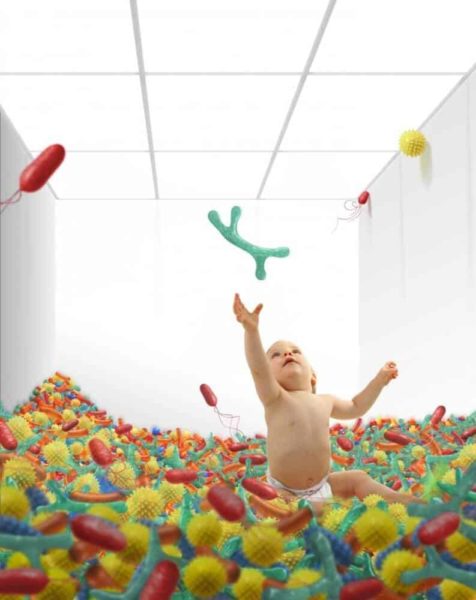Exposure to pathogens early in life is beneficial to the education and development of the human immune system.
Over the past few decades, the healthcare community has observed an intriguing phenomenon: diseases related to the immune system – type 1 diabetes, and other autoimmune diseases, allergies, and the like – have taken hold in countries that have thriving, modern economies, while barely making a mark in the developing world. One of the best-supported theories to explain this peculiar public health pattern has been dubbed the hygiene hypothesis. The theory is based on the premise that exposure to pathogens early in life is actually beneficial to the education and development of the human immune system.
– Exposure to bacteria may play a pivotal role in the immune system, and that we might be able to understand what that role is by studying the human microbiome, says Aleksandar Kostic, a postdoctoral fellow in the lab of Ramnik Xavier at the Broad Institute of MIT and Harvard.
The work is the product of an extensive collaboration involving researchers at Aalto University, Broad Institute, University of Helsinki, the Novartis Institute of Biomedical Research, and other organizations across the globe working together as part of the DIABIMMUNE Study Group. By looking at the gut microbiomes of infants from three different countries, the team uncovered evidence that not only supports the hygiene hypothesis, but also points to interactions among bacterial species that may account, at least in part, for the spike in immune disorders seen in western societies.
Silent microbiomes
The DIABIMMUNE Study Group recruited and began collecting monthly stool samples from infants in each of the three countries: Finland, Estonia and Russian Karelia. Along with the samples, from which they would identify and quantify the bacteria that made up the infants’ gut microbiomes, they also collected lab tests and questionnaires about such topics as breastfeeding, diet, allergies, infections, and family history. They evaluated all of this data, which was collected from birth to age three from over 200 infants, to see whether connections might exist between disease incidence and what they found in the microbiome.
By characterizing the microbial content of the stool samples, the team found a sharp distinction between the microbiomes of Finnish and Estonian infants and their Russian Karelian counterparts: the gut microbiomes of the Finnish and Estonian infants were dominated by Bacteroides species, while Russian Karelian infants had an overrepresentation of Bifidobacterium early in life and an overall greater variability in their microbiomes over the course of the three years that samples were collected.
– We can only speculate why this difference in bacterial populations exists; what we could show was what implications that difference in populations might have, says Tommi Vatanen, a Doctoral candidate at the Aalto University and Broad who was a co-first author of the Cellstudy.
LPS has been well-known for its ability to trigger the immune system that LPS from the bacteria E. coli is commonly used to stimulate immune cells in laboratory experiments. But, it turns out, not all LPS are created equal.
When the researchers looked at LPS signaling in the Russian Karelian microbiome, they saw a familiar pattern: E. coli LPS led the charge, likely performing its usual role triggering the immune response. However, when the researchers looked at LPS signaling in the Finnish and Estonian microbiomes, they found that the LPS from the Bacteroides species ruled the roost. What’s more, they discovered that the particular form of LPS found in Bacteroides fails to activate the immune system and even stifles the immune-activating LPS from the E. coli and other bacteria living in those communities.
– We believe that E. coli, which lives in the infant gut in all three countries, might be one of the immune educating bacteria responsible for training the immune system early in life. But, we found that if you mix Bacteroides with E. coli it can actually inhibit the immune-activating properties of E. coli, and we suspect this might have consequences on the development of the immune system, Vatanen explains.
– In the Finnish and Estonian infants, where Bacteroides dominates, the gut microbiome is immunologically very silent, Kostic adds, and continues – We believe that, later on, this makes them more prone to strong inflammatory stimuli.
The researchers suspect that the LPS immune activation by E. coli seen in the Russian Karelian infants is reflective of the relationship humans developed with microbiota over the course of human evolution. The prevalence and dominance of Bacteroides, in contrast, is a more recent phenomenon related in some way to improved sanitation and standard of living.
The researchers say that they would next like to investigate how and why Bacteroides has come to dominate in the infant gut in these westernized countries. They also plan to expand their studies to include other geographic regions and hope to uncover additional mechanisms that help explain the connection between the microbiome and immune-related disease.


